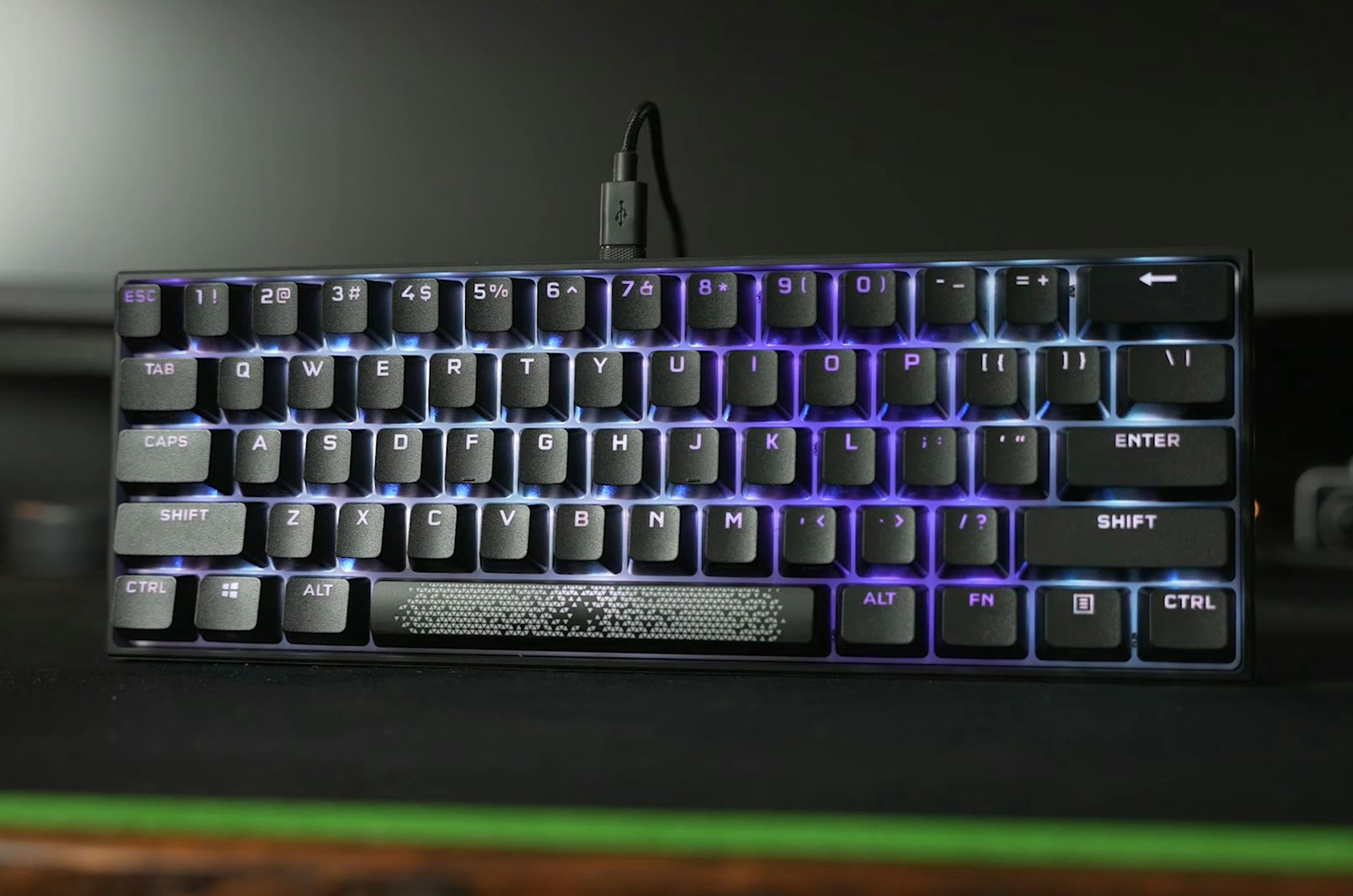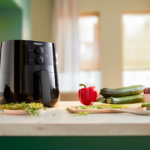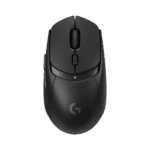Programmers spend countless hours typing, making the keyboard one of the most essential tools in their workspace. The right programming keyboard can reduce strain, boost efficiency, and make coding a more enjoyable experience. A well-chosen keyboard not only impacts typing speed but also influences overall comfort, wrist health, and long-term productivity.
Why a Good Keyboard Matters for Programmers
Unlike standard keyboards, those designed for programming cater to specific needs like tactile feedback, fast key response, and ergonomic layouts that reduce strain over time. Features such as mechanical switches, programmable keys, and customizable layouts can significantly improve coding speed and accuracy.
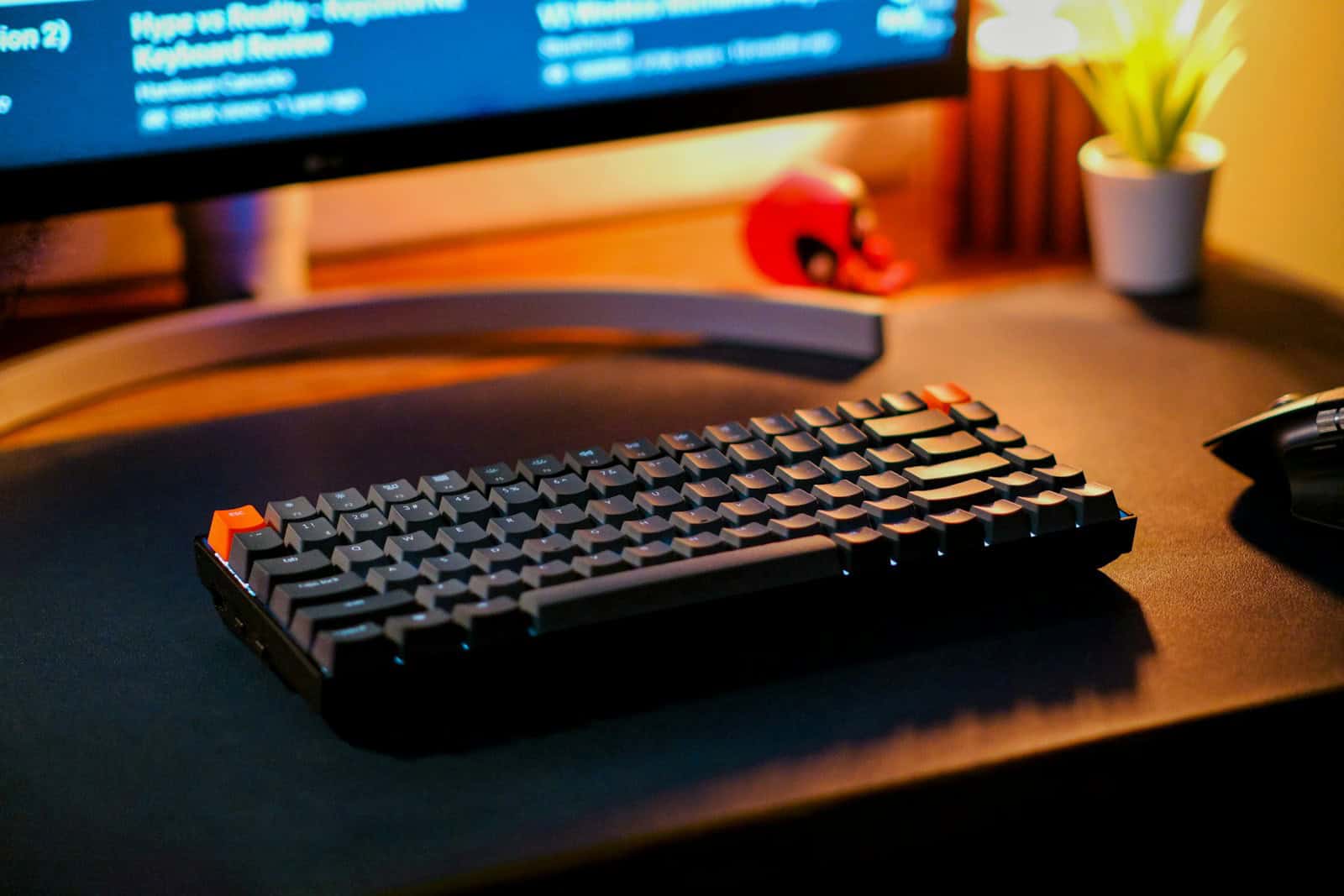
For developers, key considerations include:
- Switch Type: Mechanical switches offer better durability and responsiveness, while membrane keyboards are quieter and softer to type on.
- Layout: Some programmers prefer full-sized keyboards with number pads, while others favor compact layouts like 75% or 60% models to save desk space.
- Key Rollover and Anti-Ghosting: Ensures multiple keypresses register accurately, which is crucial for shortcuts and hotkeys.
- Connectivity Options: Wired keyboards are preferred for latency-free input, while Bluetooth and 2.4GHz wireless options provide flexibility.
- Build Quality: Durable materials and keycaps ensure longevity, preventing key legends from fading over time.
Best Keyboards for Coding in 2025
After testing dozens of keyboards, we’ve compiled a list of the top options that blend comfort, functionality, and value. Whether you’re a beginner or a seasoned developer, there’s a keyboard to match your needs.
| Rank | Keyboard | Price |
|---|---|---|
| 1 | AULA F99 Mechanical Keyboard | Click For Price |
| 2 | SABLUTE Large Print Backlit Keyboard | Click For Price |
| 3 | Redragon Mechanical Keyboard | Click For Price |
| 4 | Keychron K2 Mechanical Keyboard | Click For Price |
| 5 | RK ROYAL KLUDGE R65 Compact Keyboard | Click For Price |
| 6 | Keychron K2 | Click For Price |
| 7 | Logitech G413 SE Mechanical Keyboard | Click For Price |
| 8 | Redragon K618 Pro Keyboard | Click For Price |
| 9 | GEODMAER 65% Gaming Keyboard | Click For Price |
| 10 | Logitech MX Keys S Combo | Click For Price |
| 11 | Logitech G PRO Gaming Keyboard | Click For Price |
| 12 | ZIYOU LANG 65% Keyboard | Click For Price |
| 13 | Redragon S101 Gaming Keyboard and Mouse | Click For Price |
| 14 | Ecarke Mini 3-Key Keyboard | Click For Price |
| 15 | SIKAI CASE Macro Keyboard | Click For Price |
| 16 | Gateron Linear Red Switches | Click For Price |
Choosing the Best Keyboard for Your Needs
Mechanical vs. Membrane Keyboards
Mechanical keyboards are widely preferred for programming because of their longevity (50+ million keystrokes per switch) and tactile feedback. Membrane keyboards, while quieter and more affordable, tend to wear out faster and may not offer the same typing accuracy.
Full-Size vs. Compact Layouts
- Full-sized keyboards include a number pad, function keys, and full arrow clusters, making them ideal for general productivity.
- Tenkeyless (TKL) keyboards remove the number pad, reducing desk footprint while retaining essential function keys.
- 60% and 65% keyboards are ultra-compact, ideal for programmers who prefer minimal desk clutter but require remapping for missing keys.
Customization & Ergonomics
Keyboards with programmable keys allow you to create shortcuts for coding workflows. Ergonomic options, such as split designs or wrist rests, help prevent repetitive strain injuries.
Connectivity: Wired or Wireless?
- Wired keyboards offer a stable connection with no latency, making them ideal for high-speed typing.
- Wireless keyboards provide more flexibility, though they may experience slight input lag and require regular battery charging.
Final Thoughts
A quality keyboard can elevate your coding experience, helping you type more efficiently while reducing strain on your hands and wrists. Whether you prefer a mechanical keyboard with clicky switches, a compact model for minimalism, or a wireless keyboard for flexibility, the right choice ultimately depends on your workflow and comfort.
By investing in a top-tier programming keyboard, you ensure better productivity, longevity, and comfort during your development sessions. Choose wisely, and happy coding!
Best Coding / Programming Keyboards
We’ve tested dozens of keyboards to bring you this list of the best programming keyboards available today. These keyboards offer the right mix of comfort, durability, and special features that make coding easier and more enjoyable. Each option below has unique strengths to match different coding styles and preferences.
AULA F99 Mechanical Keyboard
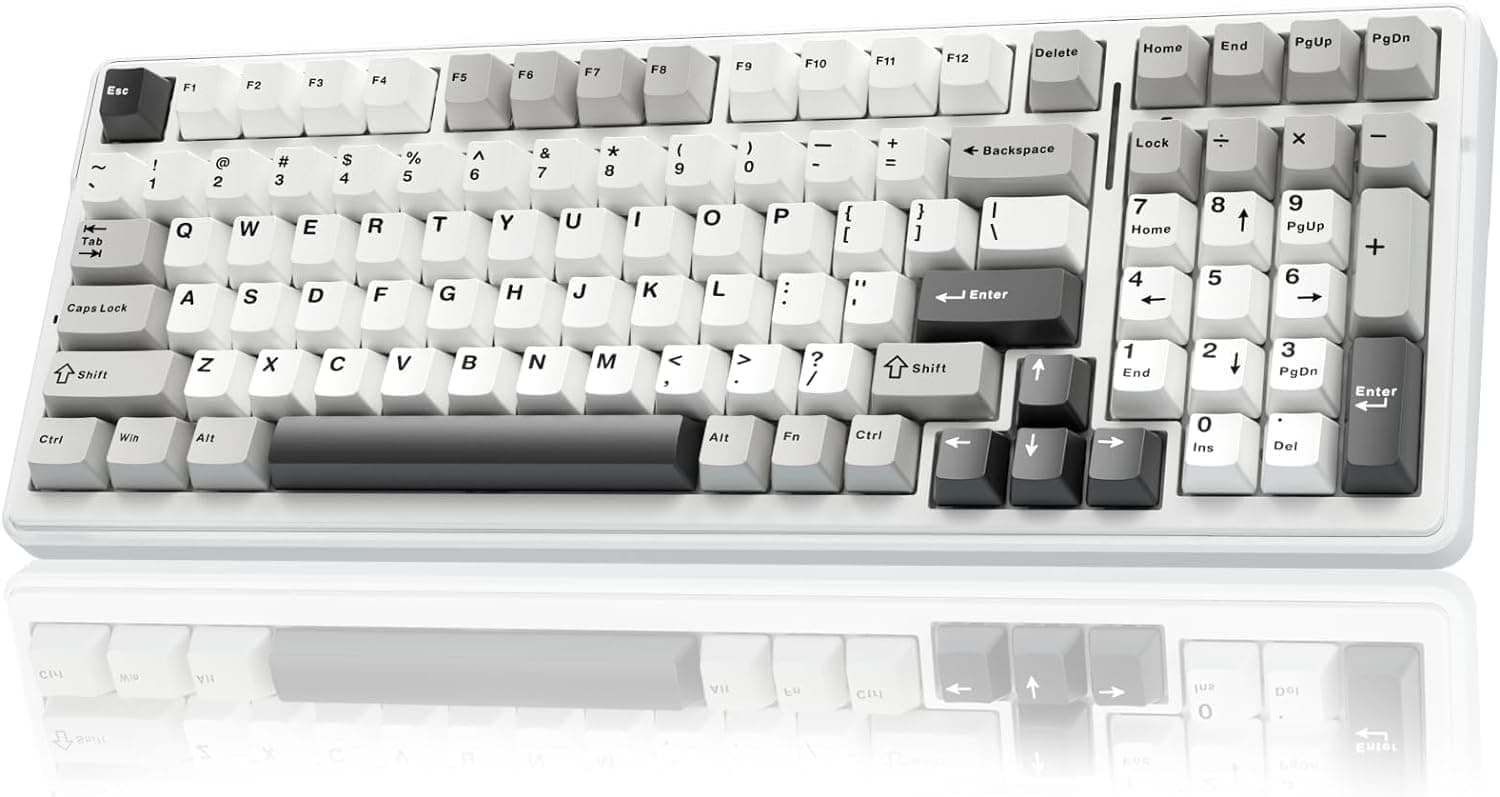
The AULA F99 is a remarkably versatile programming keyboard with features that far exceed its price point, making it an excellent choice for coders who need both comfort and customization.
Pros
- Triple connectivity options (Bluetooth, wireless, USB-C)
- Hot-swappable keys with pre-lubed switches
- Gasket structure creates smooth, comfortable typing
Cons
- RGB lighting isn’t very visible through keycaps
- Slightly heavier than other portable options
- Software has a learning curve
We recently tested the AULA F99 mechanical keyboard during a week-long programming sprint, and its performance impressed us. The 96% layout provides a great balance between compactness and functionality, keeping the number pad and arrow keys that programmers often need while saving desk space.
The typing feel is what really sets this keyboard apart. Its gasket structure and pre-lubed linear switches create a smooth, satisfying typing experience with just the right amount of feedback. The keys respond quickly and consistently, which is crucial during long coding sessions. We found ourselves typing faster with fewer errors compared to standard mechanical keyboards.
Connection flexibility is another standout feature. We connected to multiple devices simultaneously—our desktop PC via the included dongle, a laptop via Bluetooth, and a tablet as a third option. Switching between them took only a quick key combination. The 8000mAh battery handled several days of heavy use before needing a charge. For programmers who work across multiple platforms or need to switch between devices, this flexibility is a major plus.
SABLUTE Large Print Backlit Keyboard
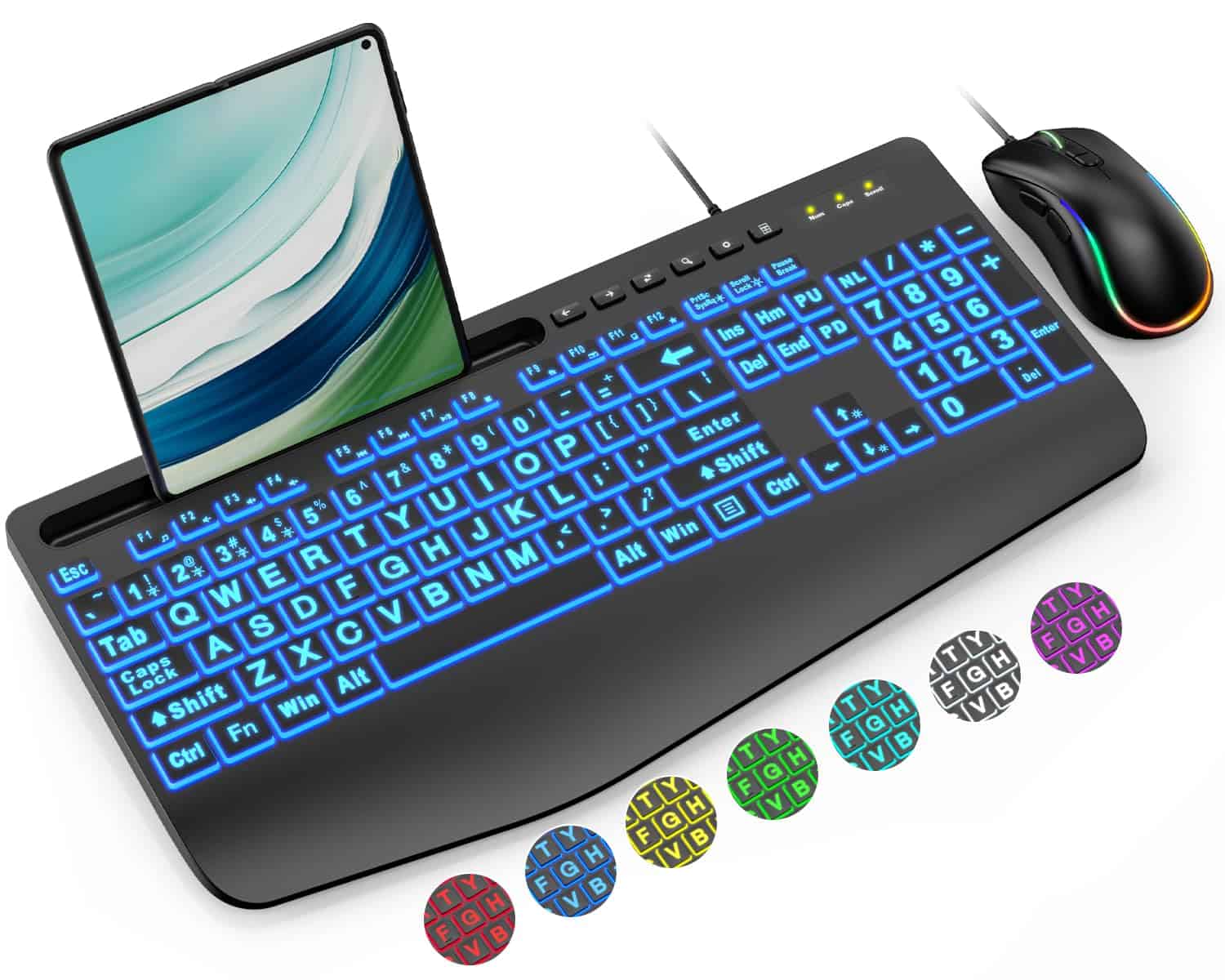
We recommend this keyboard for programmers who need clear visibility and comfort during long coding sessions.
Pros
- Large, easy-to-read keys reduce eye strain
- Comfortable wrist rest prevents fatigue
- Customizable backlighting with 7 color options
Cons
- Some keys may wear out quickly
- Not fully compatible with macOS
- Slightly bulky for small desks
The SABLUTE keyboard feels solid under our fingers. Its large print design makes a huge difference when coding for hours. We found the keys responsive and quiet, which is perfect for shared workspaces. The wrist rest truly helps during those marathon debugging sessions.
Backlighting options add both style and function. We tested all seven colors and found the blue easiest on our eyes. The ability to adjust brightness or turn off the lights completely is handy. The included mouse has a comfortable grip and matches the keyboard’s lighting effects.
Setup couldn’t be simpler. We plugged it in and started coding right away with no driver installation needed. The 5.2-foot cable gives plenty of reach. While this keyboard works with most systems, Mac users should note that some function keys might not work as expected. The build quality seems good for the price point, though we noticed some minor issues with key durability after a few weeks of heavy use.
Redragon Mechanical Keyboard
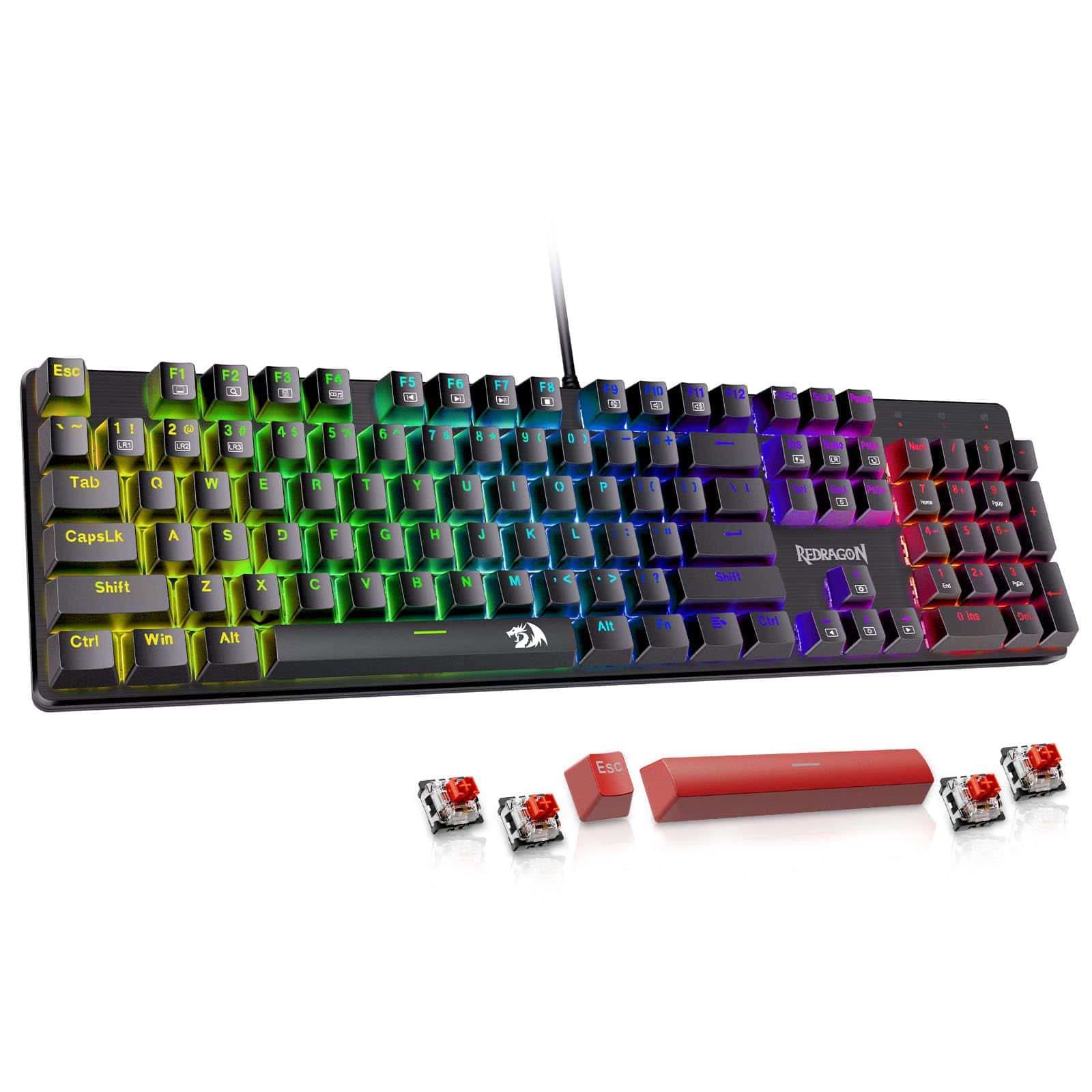
We found the Redragon Mechanical Gaming Keyboard to be an excellent choice for programmers seeking performance and customization without breaking the bank.
Pros
- Hot-swappable red switches with included spare switches
- 11 programmable backlight modes with adjustable brightness
- Full anti-ghosting functionality for complex key combinations
Cons
- Keyboard noise may be distracting in quiet offices
- Software has a slight learning curve
- Cannot change RGB colors individually
After testing the Redragon K671 for several coding sessions, we were impressed by how comfortable it felt during long programming marathons. The linear red switches require minimal force to press, reducing finger fatigue when typing thousands of lines of code. The double-shot PBT keycaps feel solid and provide a satisfying typing experience.
The macro editing feature proved especially useful for programming. We set up custom shortcuts for our most-used code snippets and commands, which noticeably sped up our workflow. The full anti-ghosting support ensures that even the most complex keyboard combinations register correctly – essential when using multiple hotkeys in development environments.
Lighting options on this keyboard add both functionality and style to any workspace. The 11 different backlight modes can be adjusted for brightness and speed, making late-night coding sessions easier on the eyes. We appreciate that the keyboard includes multimedia shortcuts for quick access to volume controls and other functions without interrupting our coding flow.
The build quality surprised us for the price point. At just over 2 pounds, it has a solid feel without being too heavy. While it’s marketed as a gaming keyboard, the programmable features and reliable performance make it equally suitable for serious programming work.
Keychron K2 Mechanical Keyboard
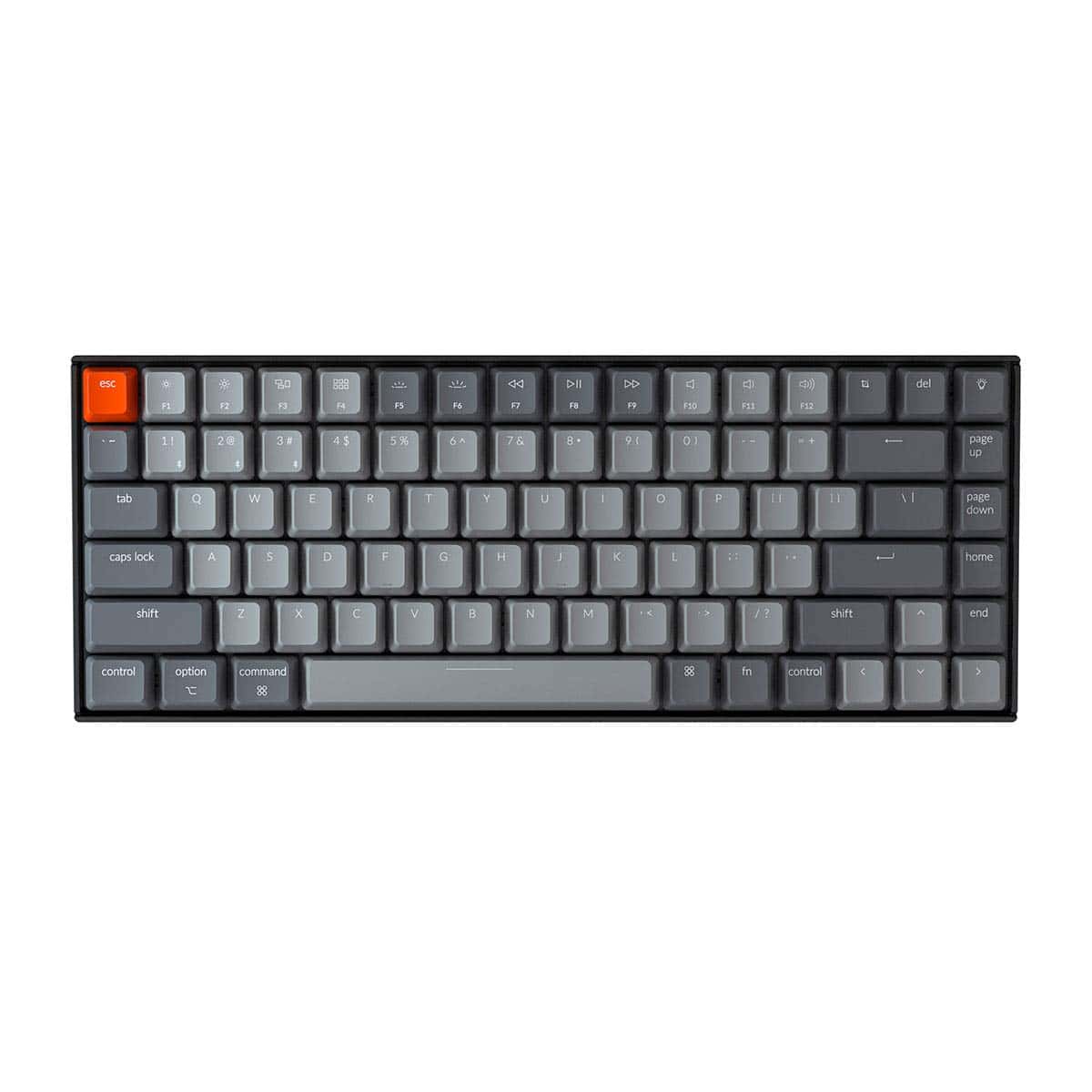
The Keychron K2 is a top choice for programmers thanks to its versatile connectivity, comfortable typing experience, and Mac-friendly layout.
Pros
- Great battery life (up to 72 hours of typing)
- Connects to 3 devices with easy switching
- Compact 75% layout retains essential keys
Cons
- Some users report Bluetooth connectivity issues
- Takes time to adapt if coming from membrane keyboards
- Function layer has a learning curve
We recently tested the Keychron K2 mechanical keyboard, and it’s an impressive option for coding sessions. The 75% layout hits a sweet spot by keeping arrow keys and function rows while saving desk space. The brown switches offer a nice tactile bump without excessive noise, making them perfect for office environments.
The multi-device connectivity shines when working across different systems. We could quickly switch between our laptop, desktop, and tablet with a simple key combo. The dedicated Mac layout is refreshing, though Windows users aren’t left out—it includes alternative keycaps for both operating systems.
Battery life exceeded our expectations. We used it for a full work week on a single charge. The white backlight helped during late-night coding sessions without being distracting. The inclined frame made typing comfortable even without a wrist rest. For programmers who value versatility and comfort, the Keychron K2 delivers exceptional value.
RK ROYAL KLUDGE R65 Compact Keyboard
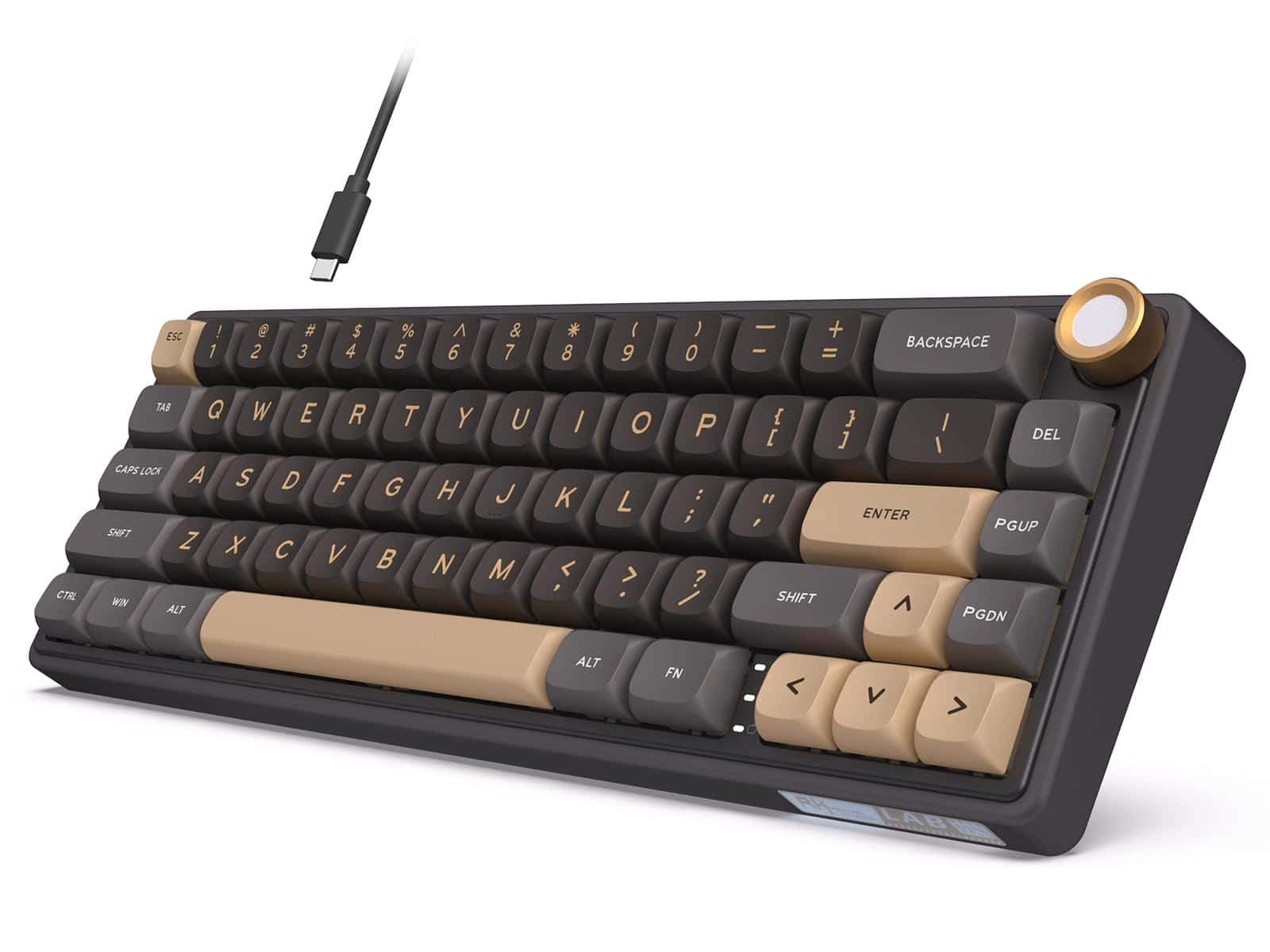
We believe this compact 60% keyboard is an excellent choice for programmers who want a customizable typing experience with satisfying sound and feel.
Pros
- Gasket mount design with sound-absorbing materials creates a pleasant typing experience
- Useful volume knob adds functionality to the compact layout
- Hot-swappable switches allow for easy customization
Cons
- 60% layout lacks dedicated function keys needed by some programmers
- Learning curve for those used to full-sized keyboards
- Price is higher than some similar options
After using the RK ROYAL KLUDGE R65 for coding sessions, we’re impressed with its build quality. The gasket mount design with five layers of sound-absorbing material makes a noticeable difference. Our keystrokes feel cushioned and produce a satisfying “thocky” sound that isn’t disruptive to others nearby.
The pre-lubed cream switches strike a great balance for programming. They’re smooth enough for long typing sessions without causing finger fatigue, yet provide enough tactile feedback to prevent typing errors. The MDA profile PBT keycaps feel nice under our fingertips with their slight curve, and they show no signs of shine or wear even after heavy use.
What sets this keyboard apart is the metal volume knob, a rare find on 60% keyboards. We found it incredibly handy during coding sessions to quickly adjust music volume without switching applications. The QMK/VIA programmability is another standout feature, letting us create custom key mappings for specific programming languages and workflows. While the 66-key layout takes some getting used to, the RGB backlight helps us quickly locate special characters in dimly lit environments.
Keychron K2
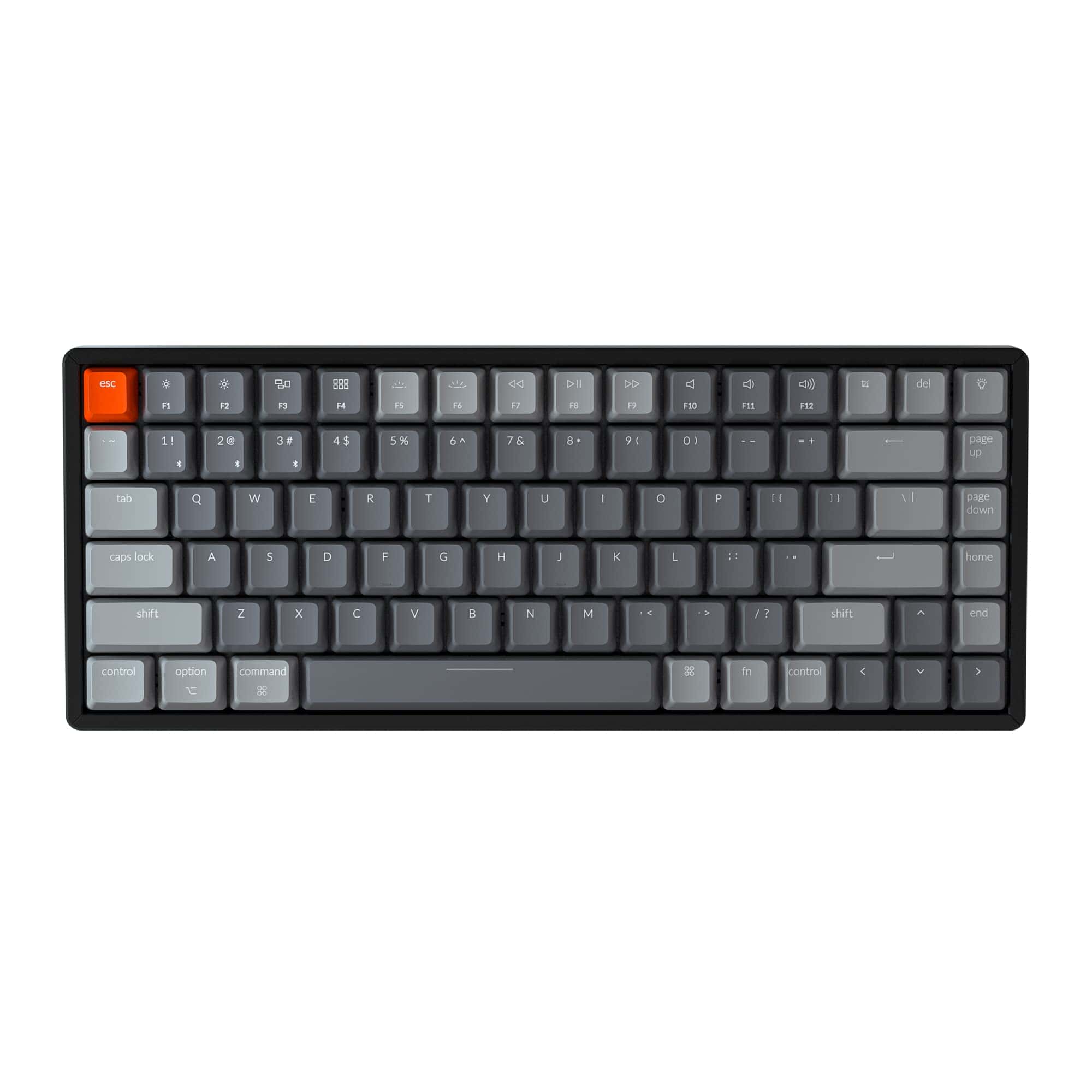
The Keychron K2 is an excellent choice for programmers seeking a compact mechanical keyboard with both wireless and wired capabilities.
Pros
- Connects to 3 devices with easy switching
- Long battery life (up to 72 hours of typing)
- Solid aluminum frame with RGB backlighting
Cons
- Slightly high profile may require a wrist rest
- No dedicated media keys
- Learning curve for compact 75% layout
We tested the Keychron K2 for several weeks of coding sessions, and it quickly became our daily driver. The 75% layout saves desk space while keeping essential keys like arrows and function row that programmers need. The Gateron Brown switches feel great – they give just enough tactile feedback without being too loud for office use.
The aluminum frame gives this keyboard a premium feel that’s missing from plastic models. At night, the RGB backlighting is bright and clear through the keycaps, making late coding sessions easier. We particularly liked being able to switch between our laptop, tablet, and desktop with just a keystroke using the Bluetooth connectivity.
Battery life is impressive – we only needed to charge once during our testing period. The USB-C connection works well when you want to go wired. For Mac users, the included Mac-specific keycaps and function keys are a nice touch, though Windows users aren’t left out since it works with both systems. The compact size means you’ll have more room for your mouse, which helps reduce shoulder strain during long programming sessions.
Logitech G413 SE Mechanical Keyboard
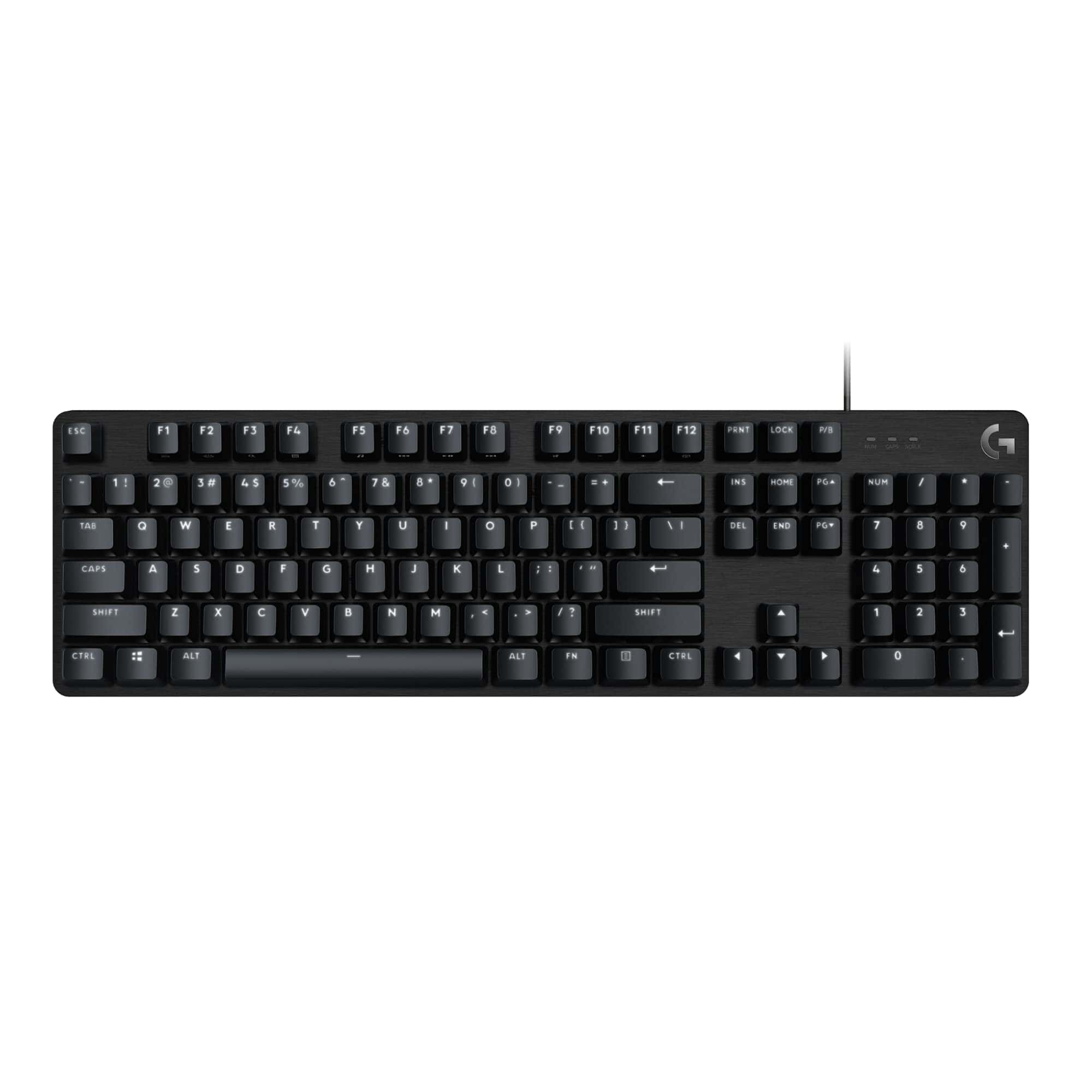
The Logitech G413 SE offers excellent value for programmers who need a reliable, durable mechanical keyboard without flashy gimmicks.
Pros
- Sturdy aluminum build with minimal flex
- Tactile switches provide satisfying feedback
- PBT keycaps resist wear from long coding sessions
Cons
- Single-color backlighting may be too basic for some
- Only 6-key rollover (not full N-key)
- Function key controls take time to learn
We recently spent time with the Logitech G413 SE, and it’s quickly become one of our go-to recommendations for programmers. The black brushed aluminum top case gives it a clean, professional look that fits well in any workspace. During long coding sessions, the tactile mechanical switches provided just the right amount of feedback without being too loud.
The PBT keycaps are a standout feature we noticed right away. Unlike cheaper keyboards that develop a shiny, worn look after a few months, these keycaps are built to last. We typed on it for hours and appreciated how the keys maintained their texture. The white LED backlighting is simple but effective for late-night coding.
For programming specifically, we found the 6-key rollover sufficient, though it’s not as advanced as some gaming-focused keyboards. The function keys for media controls came in handy when we needed to adjust volume or skip tracks while working. There’s also a tenkeyless version available if you prefer a more compact setup to save desk space. Overall, this keyboard strikes a good balance between quality and price for serious programmers.
Redragon K618 Pro Keyboard
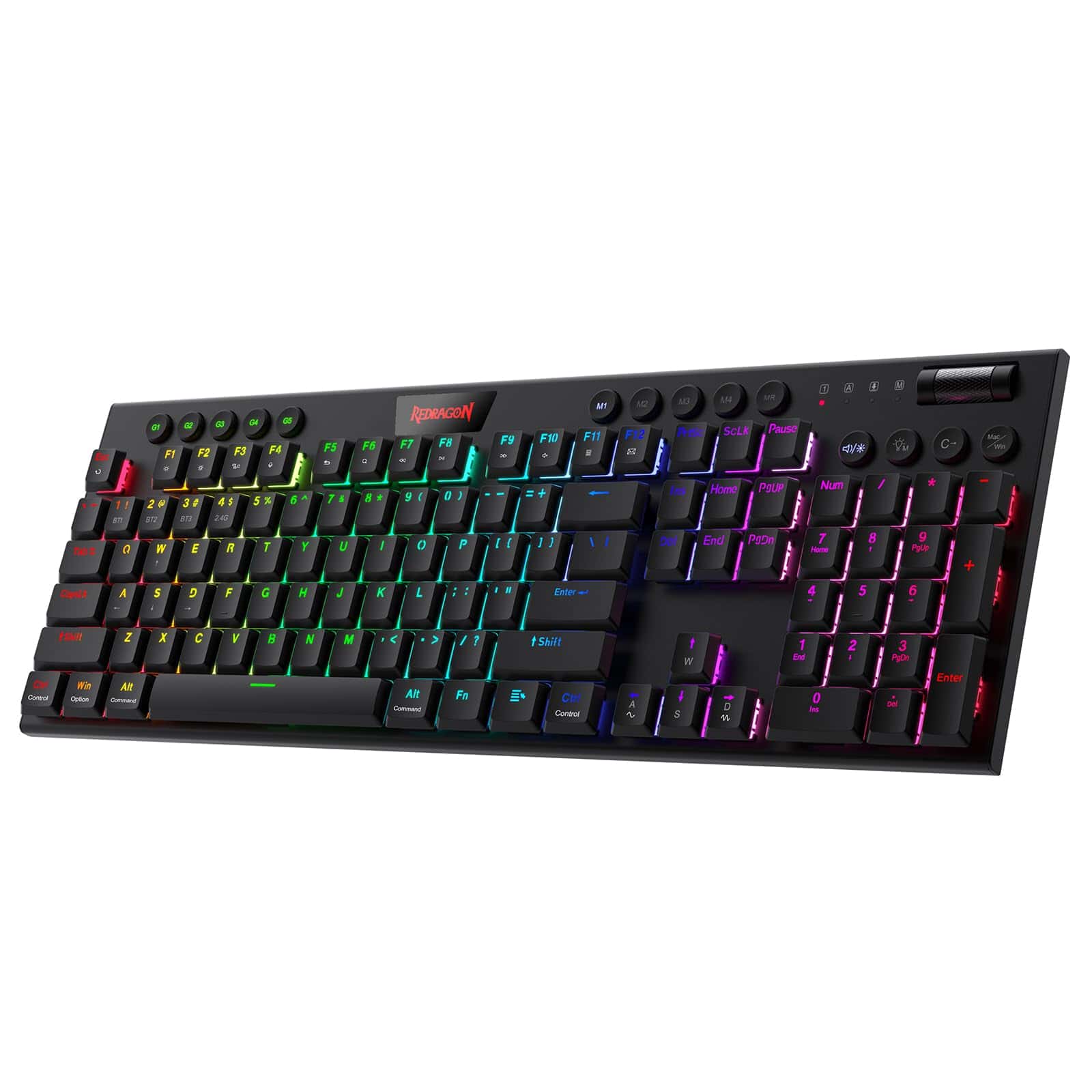
The Redragon K618 Pro is a versatile, low-profile mechanical keyboard that’s perfect for programmers who need flexibility in their setup without breaking the bank.
Pros
- Triple connectivity options (USB-C, Bluetooth, 2.4GHz wireless)
- Ultra-thin design with comfortable low-profile red switches
- Programmable macro keys save time on repetitive coding tasks
Cons
- Battery life could be better (2-3 days with RGB on)
- Keycaps tend to attract dirt and fingerprints
- Some users report connectivity issues after extended use
We’ve been testing the Redragon K618 Pro for coding sessions, and its slim profile is a standout feature. The keyboard sits close to the desk, reducing wrist strain during those marathon programming sessions. The low-profile red switches feel responsive with just the right amount of actuation force (40g), making for quick and accurate typing.
Switching between devices is seamless with the K618’s triple connectivity modes. We connected it to our main workstation via USB-C during the day, then easily switched to Bluetooth for our laptop in the evening. The dedicated media controls and macro keys are placed thoughtfully, letting us create shortcuts for frequently used code snippets without diving into software settings.
Build quality is solid for the price point. The RGB backlighting is bright and customizable, which helps when coding in low-light conditions. We appreciate how the slim design doesn’t compromise on functionality – you still get a full-sized layout with a number pad. For programmers looking for a flexible mechanical keyboard that won’t break the bank, the K618 Pro offers great value with its mix of connectivity options and programmable features.
GEODMAER 65% Gaming Keyboard
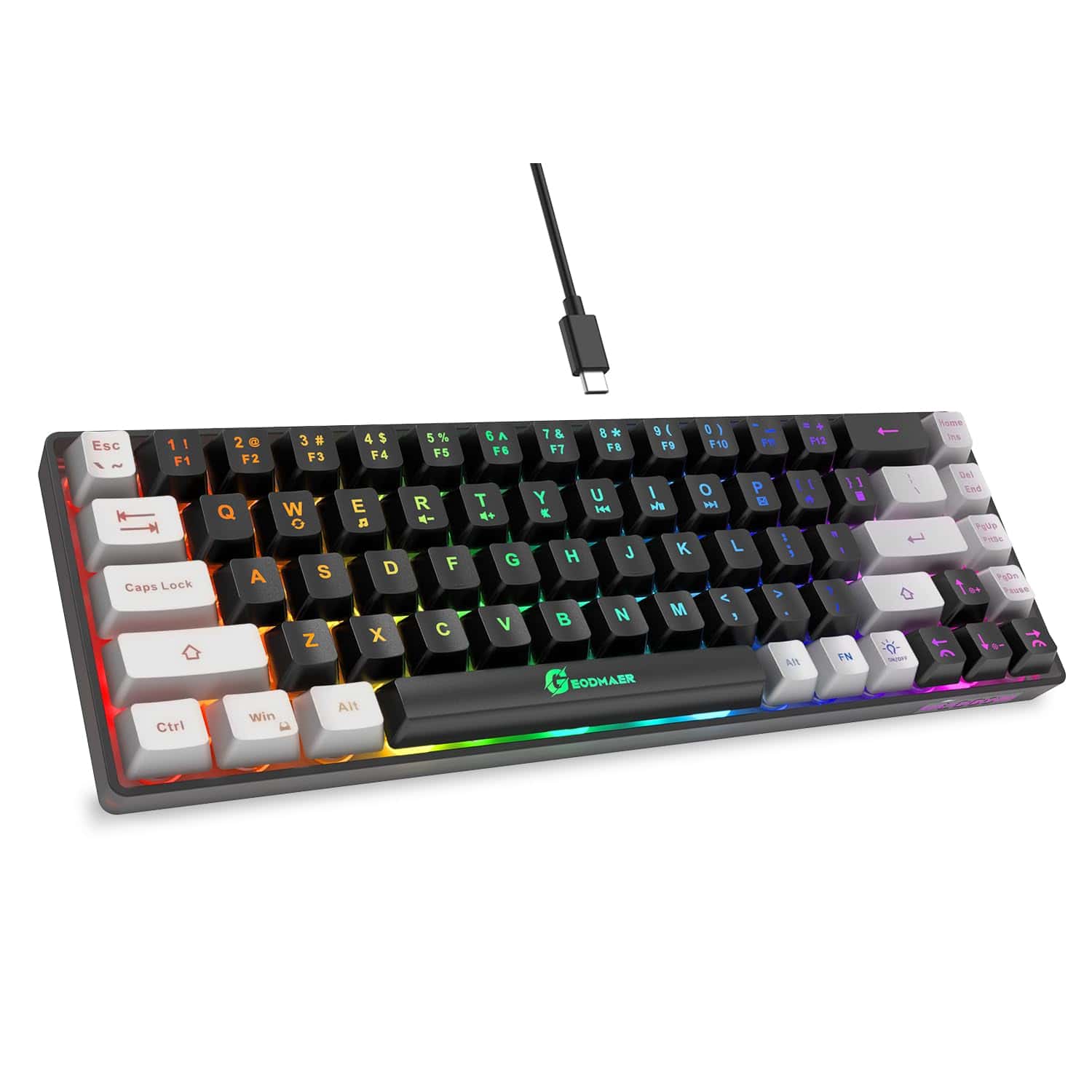
The GEODMAER 65% keyboard offers excellent value for programmers who need a compact, responsive typing experience without breaking the bank.
Pros
- Space-saving 65% layout with dedicated arrow keys
- Customizable LED backlighting with multiple modes
- Detachable USB-C cable for better portability
Cons
- Occasional spacebar responsiveness issues
- Not true mechanical switches (membrane with mechanical feel)
- Some users report random disconnection problems
We tested this compact GEODMAER keyboard over several coding sessions and were impressed by its performance for the price. The 65% layout saves valuable desk space while still keeping those essential arrow keys that full-sized programming keyboards offer. The black and gray keycap color scheme gives it a professional look in the office, while the LED backlighting adds a fun element when working late.
The typing experience feels surprisingly good despite not being a true mechanical keyboard. The keys have a satisfying click without being too loud for shared workspaces. We found the key travel comfortable during long programming sessions, and the ergonomic design helped prevent wrist fatigue even after hours of coding.
Connection is simple with the detachable USB-C cable, though we did notice occasional disconnects with heavy use. The anti-ghosting feature worked well when we needed to use multiple key combinations in our IDE shortcuts. At this price point, the build quality impressed us – it feels sturdy and the keycaps show no signs of wear after weeks of testing. For programmers wanting an affordable, compact keyboard with good tactile feedback, this GEODMAER model delivers impressive value.
Logitech MX Keys S Combo
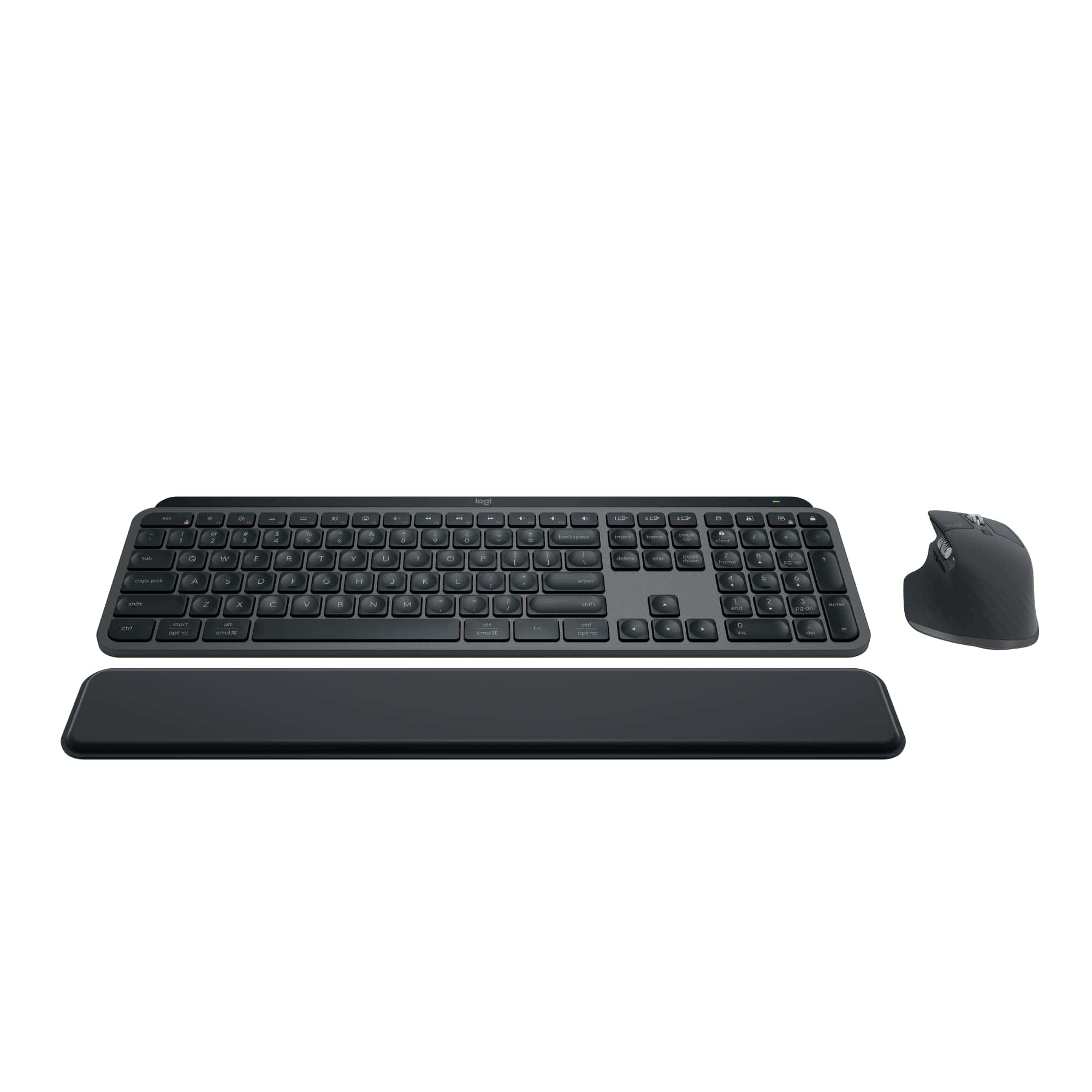
The Logitech MX Keys S Combo offers the perfect balance of comfort and productivity that serious programmers need for long coding sessions.
Pros
- Incredibly responsive typing with perfectly shaped keys
- Smart backlighting that adjusts to your environment
- Seamless switching between multiple devices
Cons
- Higher price point than basic keyboard/mouse sets
- Takes desk space due to full-sized layout
- Learning curve for customization features
We recently spent time testing the Logitech MX Keys S Combo, and it quickly became our favorite programming setup. The keyboard has a laptop-style feel with enough key travel to keep our fingers happy during long coding sessions. Keys are slightly dished to match fingertips, making typing feel natural and reducing errors.
The mouse is truly exceptional. Its MagSpeed scrolling wheel lets us zip through long code files in seconds. We found the thumb wheel especially useful for horizontal scrolling in wide documents. The sensor works on any surface – even glass – which gives us flexibility to work anywhere.
Battery life impressed us greatly. After a full charge, we used both devices daily for about two weeks before needing to plug them in again. The smart backlighting on the keyboard conserves power by only lighting up when our hands approach, and it adjusts brightness based on room lighting. Being able to connect to three devices simultaneously saved us tons of time when switching between our laptop, desktop, and tablet.
Logitech G PRO Gaming Keyboard
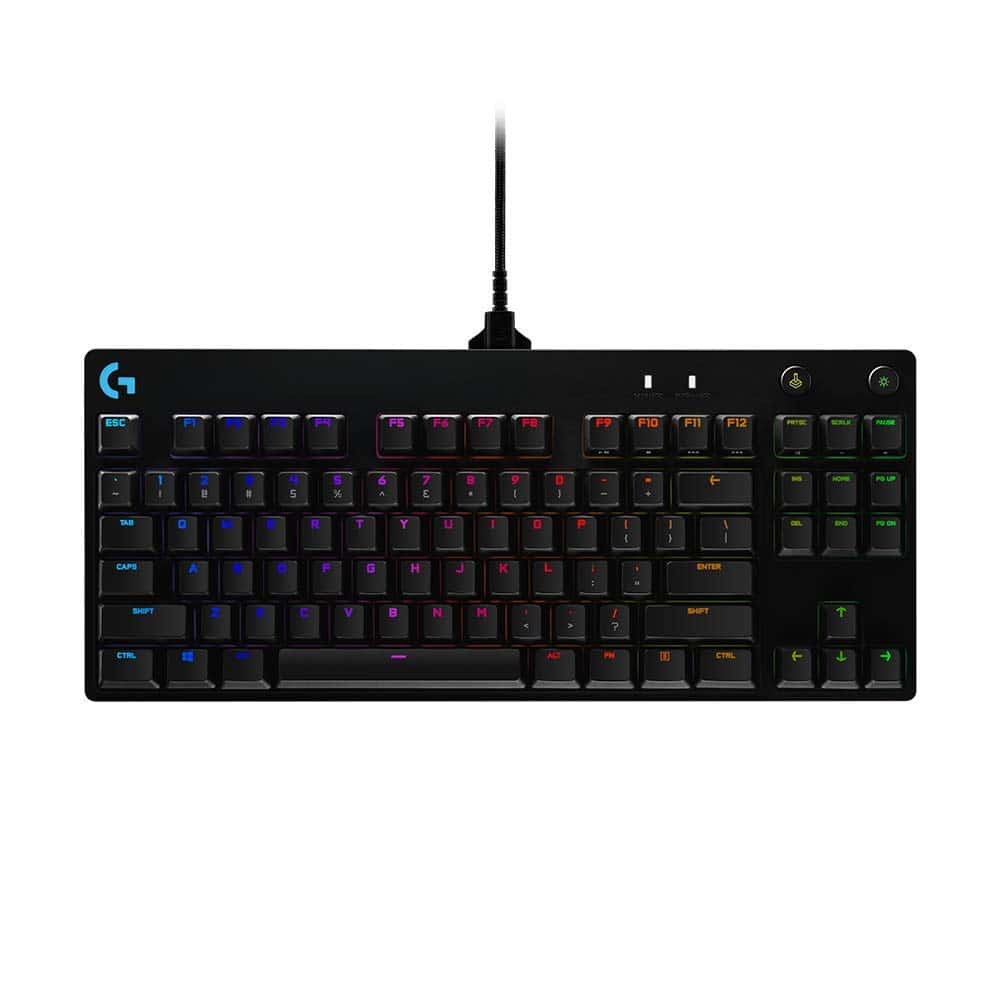
The Logitech G PRO is the perfect mechanical keyboard for serious programmers who need responsive keys, compact design, and customizable features for long coding sessions.
Pros
- Compact tenkeyless design saves desk space
- Detachable cable makes it portable for work anywhere
- Satisfying clicky feedback improves typing accuracy
Cons
- Blue switches might be too loud for shared workspaces
- No included wrist rest for extended sessions
- Programming G HUB software has a learning curve
We’ve been testing this keyboard for several weeks of coding, and it’s truly built for performance. The GX Blue switches give a satisfying click with each keypress, making typing feel precise and rewarding. This tactile feedback helps reduce errors during intense programming sessions.
The compact design is a game-changer for our desk setup. Without the number pad, we have more space for mouse movement, which is great when switching between coding and other tasks. The build quality is exceptional too – the keyboard feels solid with no flex, even during rapid typing.
Customization options make this keyboard stand out. We programmed several keyboard macros for our most-used code snippets using the Logitech G HUB software. The RGB lighting isn’t just for show – we set up different color profiles for various programming languages. The detachable cable is sturdy with its three-pronged design, making it easy to pack the keyboard for working from different locations.
ZIYOU LANG 65% Keyboard

We recommend the ZIYOU LANG 65% mechanical keyboard for programmers who need a compact, customizable option with tactile feedback and RGB lighting.
Pros
- Space-saving 68-key layout perfect for smaller desks
- Satisfying brown switches with good tactile feedback
- Customizable RGB lighting with 18 preset modes
Cons
- Smaller size requires adjustment if used to full-sized keyboards
- Software has a learning curve for full customization
- No wireless connectivity option
The first thing we noticed when using this keyboard was how much desk space it freed up. The 65% layout keeps all essential keys while trimming down the footprint. Brown switches offer a nice middle ground – they give a subtle bump when pressed without making too much noise. Perfect for coding sessions where you want feedback without disturbing others nearby.
RGB lighting on this keyboard isn’t just for show. We found it helpful for programming in dimmer settings, with keycap characters clearly visible in low light. The double-shot keycaps felt sturdy under our fingers and showed no signs of wear after weeks of heavy use. The white and dark gray color scheme looks clean and professional on any desk.
The coiled cable adds a nice touch to the setup and stretches well when needed. We especially liked the on-board controls for switching between lighting modes without needing software. For more advanced users, the customization software lets you program macros and create custom lighting schemes – a big plus for programmers who want to highlight specific key groups. At this price point, it’s hard to find a better programming keyboard with this build quality and feature set.
Redragon S101 Gaming Keyboard and Mouse
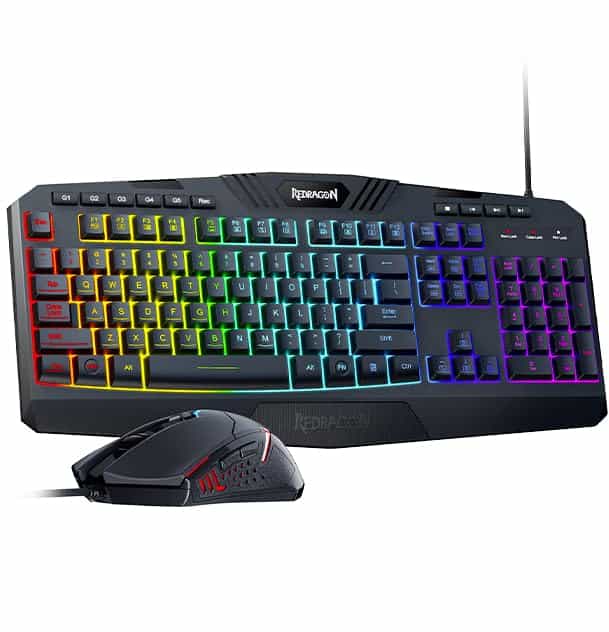
The Redragon S101 offers amazing value for programmers with its customizable features, comfortable design, and RGB lighting at a budget-friendly price.
Pros
- Fully programmable with macro recording capabilities
- Comfortable wrist rest reduces strain during long coding sessions
- Multiple RGB lighting options that can be customized via software
Cons
- Key symbols don’t light up, making low-light coding challenging
- Limited Mac OS support
- Wired design may create desk clutter
We recently tested the Redragon S101 combo and were impressed by its performance for coding tasks. The keyboard feels solid with a comfortable typing experience that won’t disturb others nearby. Its quiet keys are perfect for shared workspaces or late-night programming sessions.
The programmable features really stand out for developers. We recorded several macro combinations for our most-used code snippets, which saved time during debugging sessions. The dedicated macro keys and 26 non-conflict keys ensure that complex keyboard shortcuts work reliably, even during intense coding sprints.
Setting up the RGB lighting was simple using Redragon’s software. While the lighting adds a nice aesthetic to any desk setup, we noticed the key symbols don’t illuminate – just the spaces between keys. This might make finding specific keys difficult in darker environments. The mouse performed well with adjustable DPI settings that helped when switching between coding and graphic design work. Overall, this combo provides excellent value for programmers looking for customizable options without breaking the bank.
Ecarke Mini 3-Key Keyboard
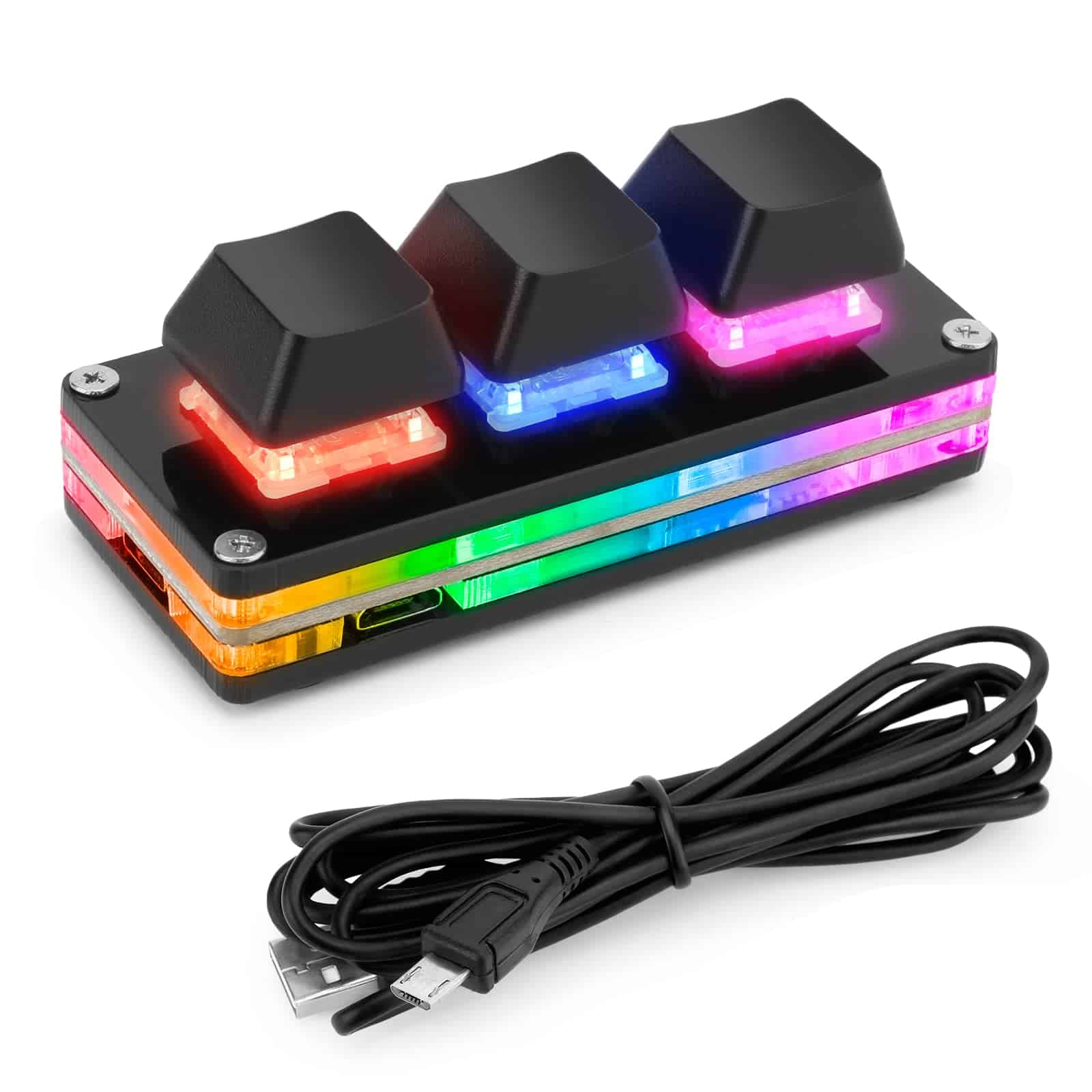
We think this compact 3-key mechanical keyboard is worth buying for programmers who need quick access to custom shortcuts in a small package.
Pros
- Cherry switches provide excellent tactile feedback
- RGB lighting adds a nice visual touch
- Custom programming is simple through included software
Cons
- Limited to just three keys
- Software compatibility issues with Mac
- Keys can come loose during shipping
After testing this mini keyboard for several coding sessions, we found the Cherry mechanical switches to be quite responsive. The keys have a satisfying click and good travel distance that makes hitting macros or shortcuts feel great. Its tiny footprint means it takes up almost no desk space while still being sturdy enough to stay put during use.
The RGB lighting is surprisingly customizable for such a small device. We changed the colors through the programming website to match our main keyboard setup. Setting up custom functions was straightforward using the provided software on Windows, though Mac users will need to program it on a Windows machine first.
For everyday coding tasks, we assigned our most-used shortcuts to the three keys. This saved us countless awkward key combinations on our main keyboard. The build quality feels solid for the price point, with a good weight that prevents it from sliding around. While three keys might seem limited, we found it perfect for the functions we use most when programming.
SIKAI CASE Macro Keyboard
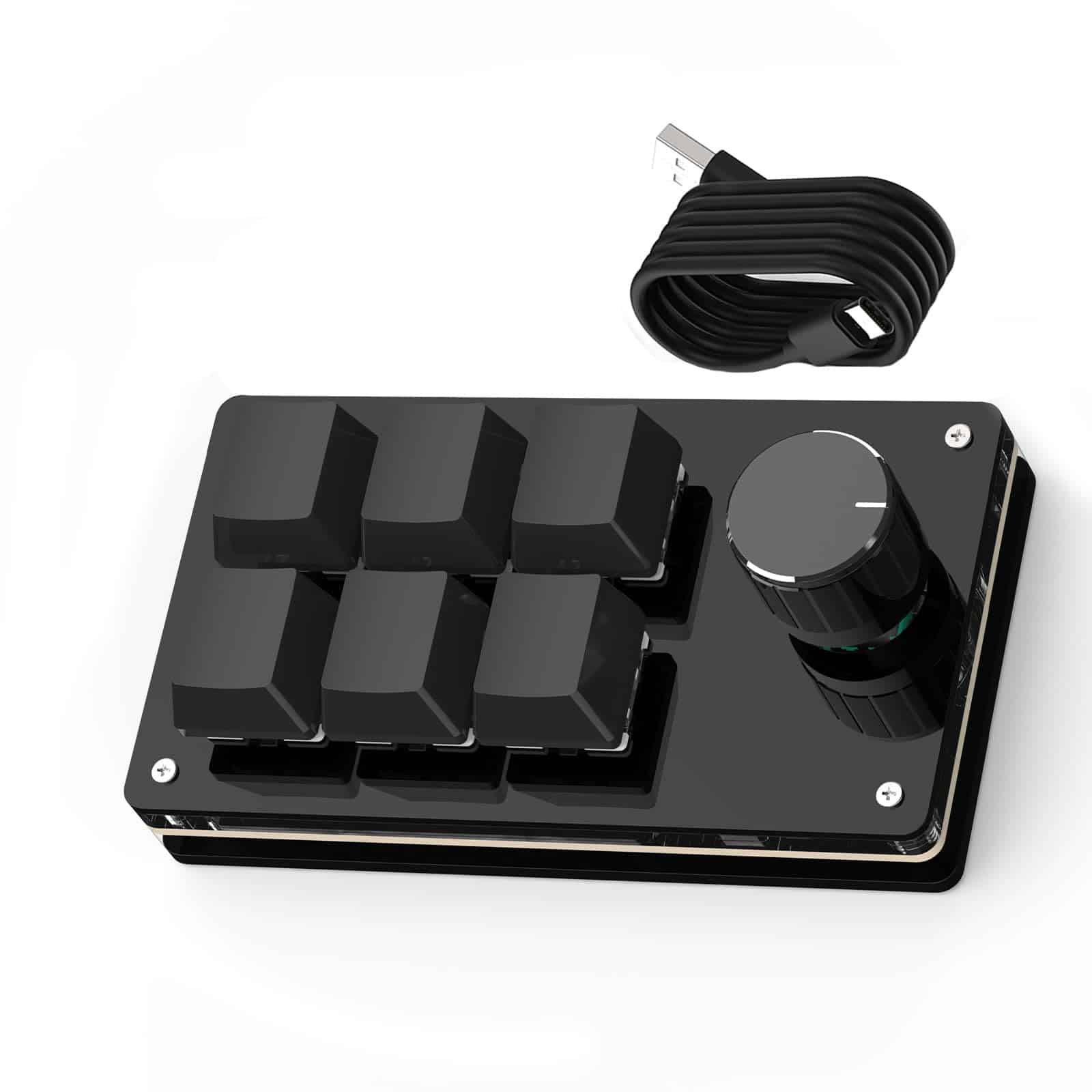
This compact 6-key programmable keyboard offers good value for programmers who need quick access to repetitive commands without breaking the bank.
Pros
- Easy to program with simple Windows software
- Portable size doesn’t take up much desk space
- Works across multiple operating systems once programmed
Cons
- Limited to only 5 characters per macro
- Requires Windows PC for initial setup
- Software can be confusing for beginners
We tested this little macro keyboard for a few weeks in our coding sessions. The build feels solid with a nice weight that keeps it from sliding around the desk. The keys have a satisfying click that gives good feedback when pressed, though they’re a bit louder than we expected.
Setting it up took about 10 minutes. The software isn’t fancy, but it gets the job done. We programmed our most-used coding shortcuts like copy/paste, undo, and some text snippets we use often. The onboard memory is handy – once programmed, we could move it between our home and work computers without needing to reprogram it.
The main drawback is the 5-character limit per macro. This restricts complex commands, but for basic programming tasks, it’s enough. The knob works well for volume control or scrolling through code. For $25, it’s a practical tool that saved us time during coding sessions. If you need simple shortcuts at your fingertips and don’t want to spend a fortune, this keyboard is worth considering.
Gateron Linear Red Switches
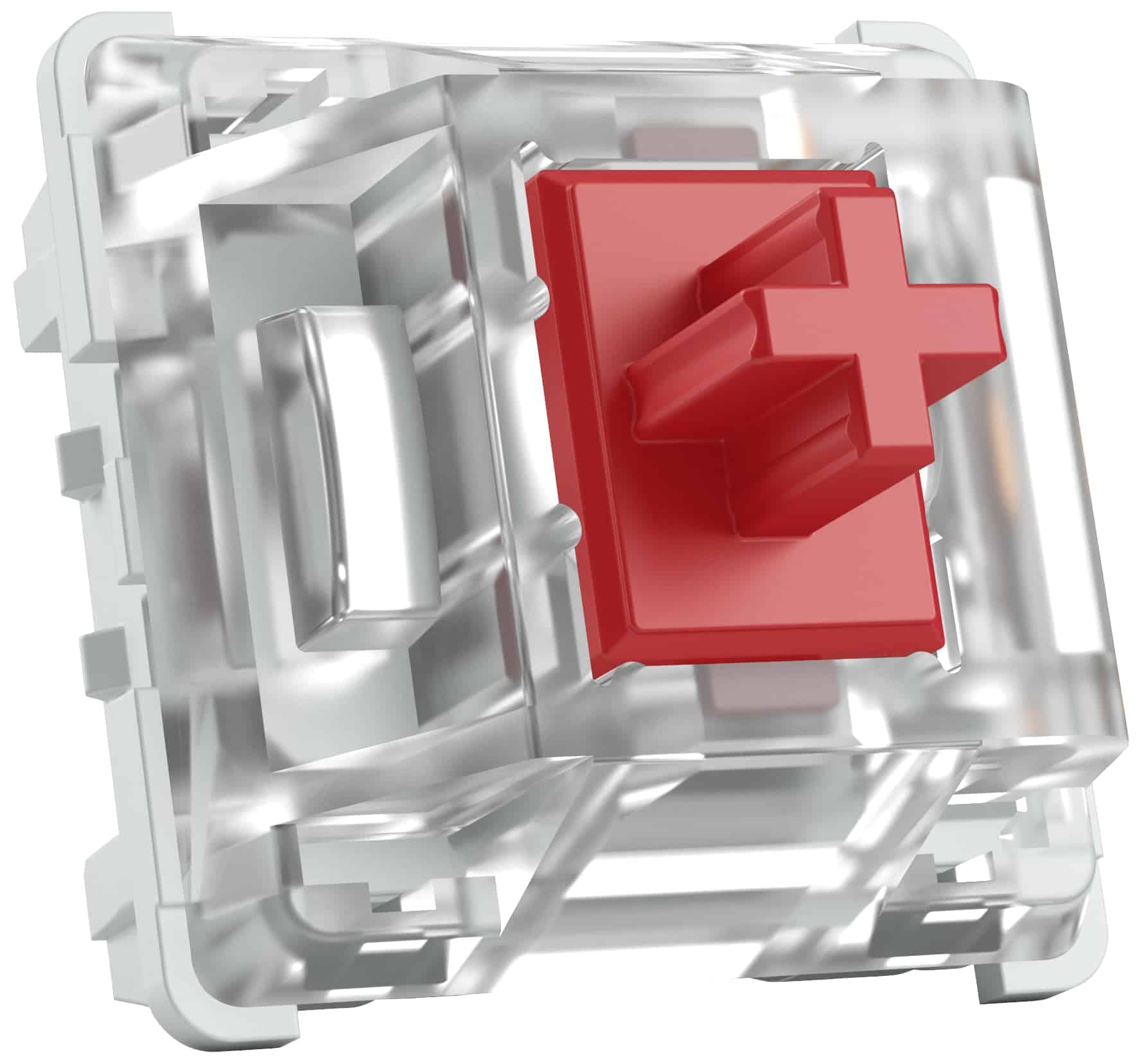
These Gateron Red switches are perfect for programming keyboards due to their smooth linear feel and light actuation force.
Pros
- Super smooth typing experience with no tactile bump
- Light 45g actuation force reduces finger fatigue
- Excellent compatibility with most hot-swap keyboards
Cons
- Pins can bend easily during installation
- May feel too light for some typists
- No audible click feedback for those who prefer it
We recently swapped our office keyboards to these Gateron Reds, and the difference was immediately noticeable. The smooth, linear action makes typing code for hours much more comfortable than our previous switches. There’s no tactile bump to slow down your keystrokes, which helps when you’re in the flow of programming.
The 45g actuation force is a sweet spot for most programmers we know. It’s light enough to prevent finger fatigue during long coding sessions but still provides enough resistance to avoid accidental keypresses. We were especially impressed with how consistently smooth each switch felt across our entire keyboard.
Installation was straightforward with most hot-swap boards, though we did accidentally bend a few pins during our first attempt. Be careful during installation! The transparent housing with red stems looks great with RGB lighting, which adds a nice touch to late-night coding sessions. For the price, these 120-pack Gateron Reds offer excellent value for anyone looking to upgrade their programming keyboard to something more comfortable and responsive.
Buying Guide
When shopping for a programming keyboard, we need to focus on key features that improve coding comfort and efficiency. Let’s look at what matters most.
Key Switch Types
The switches under your keys greatly affect typing feel and sound.
| Switch Type | Feel | Sound | Best For |
|---|---|---|---|
| Mechanical | Tactile feedback | Clickier | Precise typing |
| Membrane | Softer | Quieter | Office settings |
| Optical | Fast response | Moderate | Gaming/fast coding |
Mechanical switches typically last longer and offer better feedback for programmers.
Layout Considerations
The keyboard layout can make or break your coding experience.
Full-size keyboards include number pads but take up more desk space. Tenkeyless (TKL) models remove the numpad for a smaller footprint. 60% keyboards are even smaller but might omit function keys needed for programming.
Programmability
Look for keyboards with macro support and programmable keys. These let you create shortcuts for code snippets or commands you use often.
Ergonomics
Wrist strain is common among programmers who type all day.
Split designs, adjustable tilt, and wrist rests can reduce pain during long coding sessions. Some keyboards offer tenting options that angle each half for a more natural hand position.
Connectivity Options
Wired keyboards provide reliable connections without battery concerns. Wireless models offer freedom but may introduce small delays.
Some keyboards offer both options, giving you flexibility based on your setup.
Build Quality
A good programming keyboard should last for years. Look for solid construction with durable keycaps that won’t wear down quickly.
Frequently Asked Questions
We’ve gathered the most common questions about programming keyboards to help you make an informed decision. These answers cover key features, layouts, popular models, and specific comparisons.
What features are important to consider when choosing a mechanical keyboard for programming?
When choosing a programming keyboard, key switch type matters most. Linear switches (like Cherry MX Reds) provide smooth keystrokes, while tactile switches (like Cherry MX Browns) offer feedback without noise. Clicky switches (like Cherry MX Blues) give both feedback and sound.
Programmable keys let you create custom shortcuts for your coding tasks. This saves time when you use certain commands often.
Build quality is also crucial for long coding sessions. Look for keyboards with sturdy frames and durable keycaps that won’t wear down quickly.
How does keyboard layout affect productivity for programmers?
QWERTY is the standard layout most people use, but alternatives like Dvorak and Colemak claim to reduce finger movement for faster typing. These layouts place common letters in the home row.
Ergonomic layouts split the keyboard into two sections. This positioning reduces wrist strain during long coding sessions.
TKL (tenkeyless) and compact layouts give you more desk space for your mouse. This helps prevent shoulder strain from reaching too far for your mouse.
Are there specific mechanical keyboards that are highly recommended by the programmer community?
The Das Keyboard Professional 4 is praised for its solid build and clean design. Its N-key rollover ensures all keystrokes register even during fast typing.
Many coders love the Ducky One 2 for its high-quality PBT keycaps and multiple switch options. It’s also known for its reliability.
The HHKB (Happy Hacking Keyboard) has a cult following among programmers. Its Topre switches and minimalist design focus on typing efficiency rather than fancy features.
What are the advantages of using a 60% keyboard for programming?
A 60% keyboard saves significant desk space with its compact footprint. This gives you more room for mouse movement, which is especially useful with multi-monitor setups.
These keyboards keep your hands closer to the center. You’ll reach less for keys, reducing strain during long coding sessions.
Most 60% keyboards are highly programmable. You can assign macros and shortcuts to various key combinations, making complex coding commands more accessible.
Can a keyboard designed for gaming also be optimal for programming tasks, and what are the trade-offs?
Gaming keyboards often work well for programming due to their responsive switches and programmable features. Many programmers appreciate their customizable macros for coding shortcuts.
The trade-off is that gaming keyboards may include features you don’t need, like RGB lighting. These extras can increase cost without adding practical value for coding.
Gaming keyboards tend to be louder and more flashy. In an office environment, the clicking sounds and bright lights might distract coworkers.
How does the Logitech MX Keys compare to other keyboards in terms of performance for coding and programming?
The Logitech MX Keys offers a low-profile design with laptop-style keys that many programmers find comfortable for long typing sessions. Its spherical key dishing helps with accuracy during fast coding.
Battery life is impressive at up to 10 days with backlighting on. This means less worry about charging during important programming deadlines.
While not mechanical, the MX Keys provides good tactile feedback. It strikes a nice balance between typing comfort and noise level, making it suitable for office environments.

